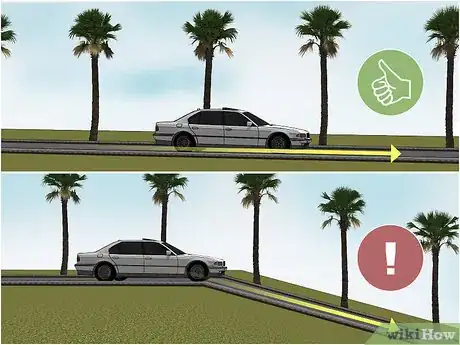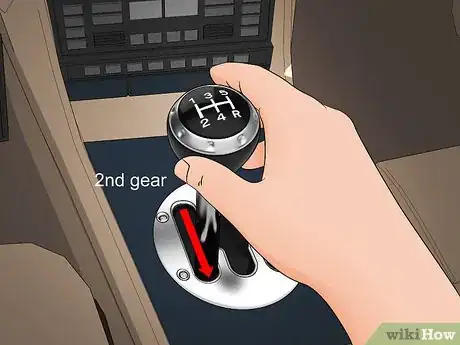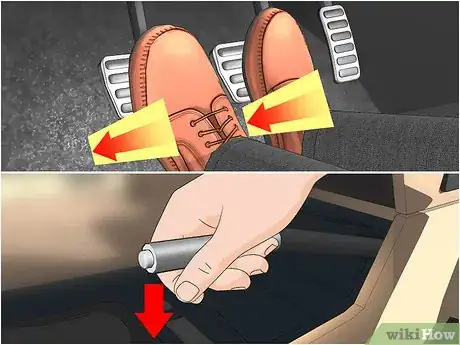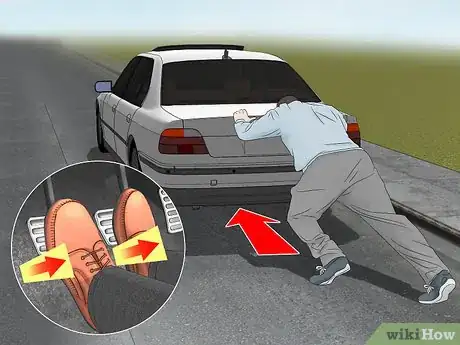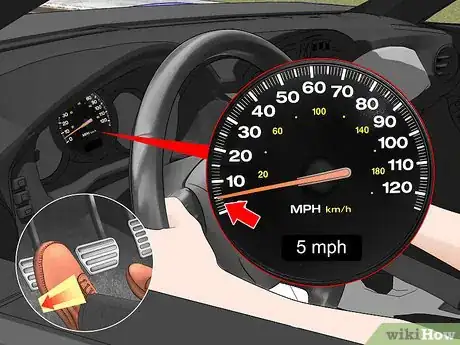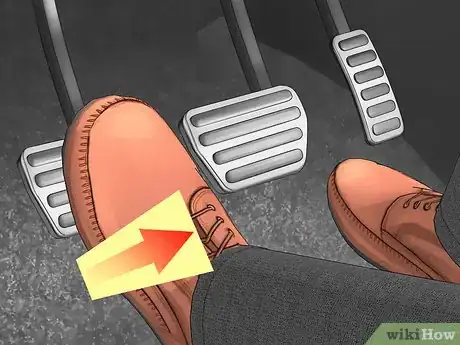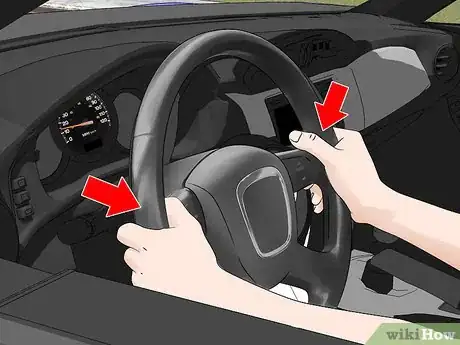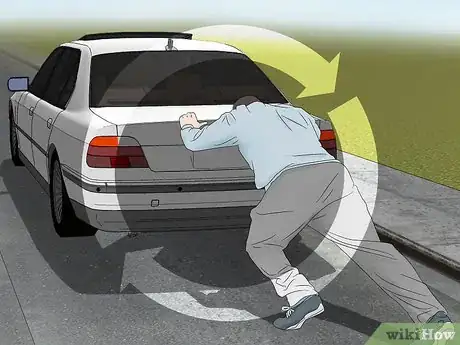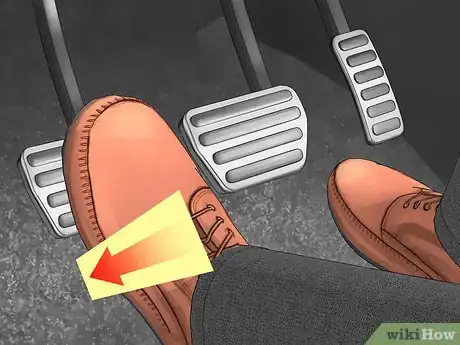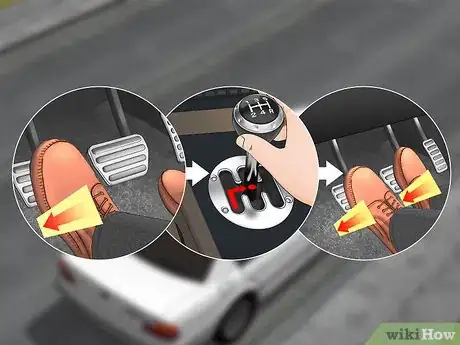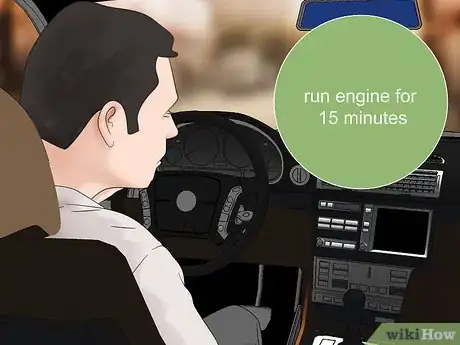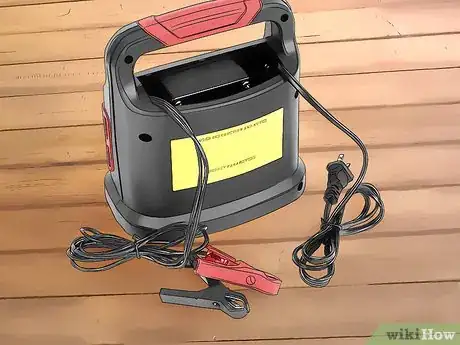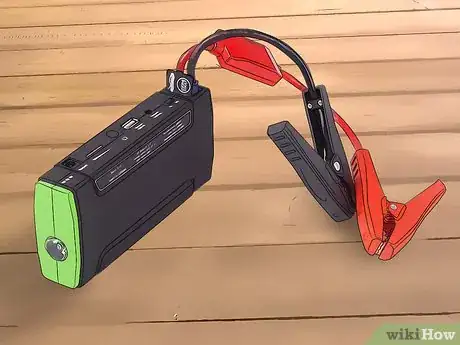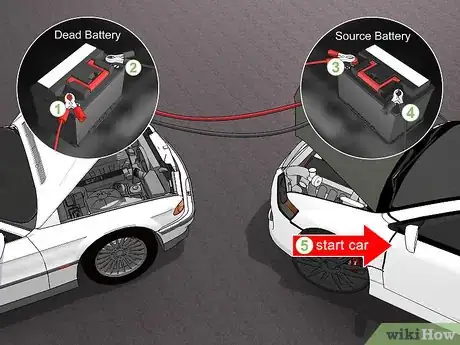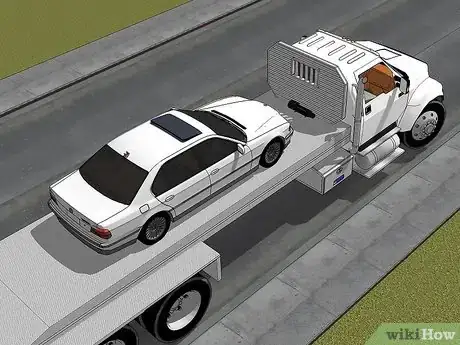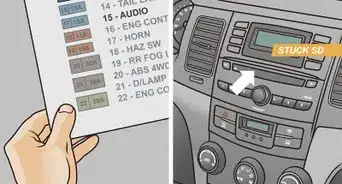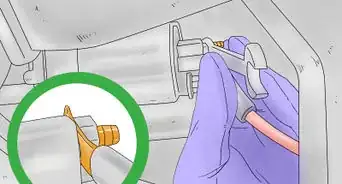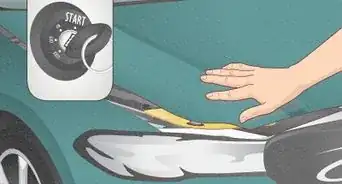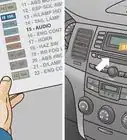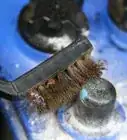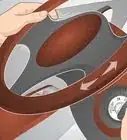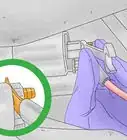This article was co-authored by wikiHow Staff. Our trained team of editors and researchers validate articles for accuracy and comprehensiveness. wikiHow's Content Management Team carefully monitors the work from our editorial staff to ensure that each article is backed by trusted research and meets our high quality standards.
There are 7 references cited in this article, which can be found at the bottom of the page.
This article has been viewed 17,807 times.
Learn more...
If you find yourself stranded with a dead battery and no jumper cables, you still may be able to get your car started by push or pop starting it. All you need to push start a car is a safe stretch of road and a friend to help push. This method will only work in cars equipped with a manual transmission.
Steps
Push Starting with a Manual Transmission
-
1Determine if you’re on any kind of a slope. Push starting your car on a hill may help get the vehicle moving, but can also be dangerous. If your car is parked on a steep hill, it is unsafe to push start it and you’ll have to call a tow truck or friend with jumper cables to assist you. If it’s on a slight hill, however, the incline may help get the car rolling.[1]
- If your on a hill with any more than a slight grade, it may be unsafe to try to push start your car.
- Push starting a car on a steep hill runs the risk rolling down the hill without power steering or power brakes.
-
2Clear the path of the vehicle for safety. Make sure there is nothing in the immediate path of the vehicle because as it begins to roll, the driver won’t have the benefit of power steering to help them avoid a collision or running something over.[2]
- Without power steering, the wheel will be much harder to turn, especially as the car first starts to move.
- The brakes may also not work as well until the engine has started.
Advertisement -
3Insert the key in the ignition and turn it to on. With the battery dead, the car won’t do anything when you turn the key, but it will release the steering wheel lock. It’s also important that the key is in the “on” position when push starting the vehicle, otherwise the engine won’t start.
- If you turn the key and hear a rapid clicking from the starter don’t worry. That just means there’s some electricity in the system, but not enough to turn the motor over.
-
4Put the transmission in second gear. While you can feasibly push start a car in first or third gear, second is the easiest and safest. First gear is a low gear so it might make the vehicle accelerate abruptly when you disengage the clutch. Third gear would require reaching higher speeds.[3]
- Second gear is the furthest back and to left with your gear selector in most vehicles.
-
5Release the parking brake and hold the brake pedal and clutch down. Plant your foot firmly on the brake while you disengage the parking brake and use your left foot to hold the clutch pedal to the floor.[4]
- Make sure you hold the brake pedal down while releasing the parking brake so the vehicle doesn’t start to roll prematurely.
- Keep the clutch pedal pressed firmly on the floor.
-
6Ask some friends to push the vehicle and release the brake. You’ll need to sit in the driver’s seat to disengage the clutch and steer the car, so you’ll need friends to do the legwork. Make sure they place their hands on structurally sound parts of your vehicle to push. Remember to release the brake as they begin to push.[5]
- Tail lights, spoilers and fins are not safe places to put your hands when pushing a car.
- Pushing against the metal portion of the trunk lid or the rear bumper are both safe.
- For most vehicles, one person pushing is sufficient, but a few people will make the job easier.
-
7Watch the speedometer until you reach at least 5 miles (8.0 km) per hour. If you’re on a hill, getting going will be easy, but if your friends are pushing, it may take a second to get the wheels turning. Keep the clutch pressed as the vehicle builds up speed to at least 5 miles (8.0 km) per hour, but preferably closer to 10 miles (16 km) per hour.
- The faster you are going, the more likely the engine will start when you release the clutch.
- If the car starts rolling downhill faster than your friends can keep up, tell them not to run to catch up, but instead just let the car roll.
-
8Drop the clutch. Once the car is rolling fast enough, release the clutch quickly by removing your left foot from the pedal. The engine will likely buck and sputter as it is forced to start by the transmission connecting the engine to the turning wheels.
- When you drop the clutch, the engine should start abruptly.
-
9Keep a tight grip on the steering wheel, especially in front wheel drive cars. As the engine starts, torque steer may move the wheels to the left or right if you don’t prevent it with proper control.
- There’s no need to keep a white-knuckle grip on the wheel, but hold it as firmly as you normally do while driving.
- The wheel may jerk a bit suddenly as the engine is engaged, but then should feel normal.
-
10Try again if the engine failed to start. It may take a few tries to get the car moving fast enough to start when you drop the clutch. If you’re moving too slowly, dropping the clutch could slow the car down enough to let it stall again. If this happens, press the clutch back down and have your friend keep pushing, then drop it again when you gain enough speed.
- If need be, let your friend take a break and start pushing again.
-
11Press the clutch back down once the engine starts. If you were successful, the engine will start as the engine is turned by the wheels. This will also power the alternator, which will produce enough current to keep the engine running.[6]
- Pressing the clutch back in will allow the engine to idle.
- The engine should continue to run thanks to the current produced by the alternator, which is also charging the battery.
-
12Place the car in neutral and apply the brakes. With the engine now running, take the car out of gear by pressing the clutch and then pushing the stick forward out of second gear. Then press the brake pedal to ease the car to a safe stop.[7]
- Keep the engine running. If you shut it off when you stop, you’ll have to start over.
-
13Leave the car running for at least 15 minutes. Depending on how dead the battery was, it may take the alternator some time to recharge it enough to be able to start the engine again on its own. Drive it around or just leave it running where it’s parked to give the alternator time to charge the battery.[8]
- Be sure you park the vehicle in a safe place to let it charge. The side of the road is generally not considered a safe parking space.
- You can drive the vehicle like normal once it’s running.
Charging the Battery with an Automatic Transmission
-
1Purchase a battery charger if you're near an auto parts store. If you are within walking distance of an auto parts store and don’t have access to another vehicle to provide a jump, you can purchase a portable auto battery charger to recharge your battery. Simply plug the charger into an outlet in your house or garage, then connect the red lead from the charger to the positive (+) terminal and the black wire to the negative (-) terminal on the battery. Turn on the charger and wait for it to indicate that the battery is charged.[9]
- Most battery chargers will have an indicator light that turns green when your battery is fully charged.
- It may take hours to completely charge the battery.
-
2Try a portable booster pack if you have access to a wall outlet. Portable booster packs are also available at most auto parts stores and they work a lot like jump starting a car. Unfortunately, they also need to be charged before use. Plug the booster pack into a wall outlet until it’s fully charged, then bring it out to your vehicle. Connect the red lead from the booster pack to the positive (+) terminal on the battery and the black lead to the negative (-) one.[10]
- It may take a minute or two for the booster pack to provide enough charge to start the engine.
- With the booster pack engaged, turn the key to start the engine.
- Let the engine run for at least 15 minutes after it starts to recharge its battery.
-
3Ask someone nearby if they can give you a jump. If you don’t have jumper cables, someone else nearby might. Ask around to see if anyone has a set of cables and might be willing to lend you a hand.
- If a nearby stranger is willing to assist, connect the red lead from their jumper cables to the positive (+) terminal on your car’s battery. Then connect the black lead to the negative (-) terminal.[11]
- Do the same on their vehicle and then ask them to start their car.
- With the cables connected and the other car running, turn the key to start yours.
-
4Call a tow truck as a last resort. While tow truck services are usually thought of as ways to get your broken down car home or to a repair shop, they can also bring you gas or jump start your vehicle when you’re in a jam. Call a local auto repair facility in your area and ask if they can send someone to jump start your vehicle.[12]
- If you are unsure of where to find a service that can help, try contacting the State Police through their non-emergency line. They can often provide further information or assistance.
- Many cell phone and insurance companies offer roadside assistance as a part of their plans.
Warnings
- Never push start a car next to a busy road or in traffic.⧼thumbs_response⧽
- Make sure the person pushing keeps clear of the wheels as they begin to turn.⧼thumbs_response⧽
References
- ↑ http://www.gadgetreview.com/how-to-jump-start-car-with-or-without-cables-another-car
- ↑ https://youtu.be/1pj4GY_7q8w?t=29s
- ↑ https://www.thecarconnection.com/tips-article/1087373_how-to-push-roll-start-a-car
- ↑ http://www.gadgetreview.com/how-to-jump-start-car-with-or-without-cables-another-car
- ↑ https://youtu.be/1pj4GY_7q8w?t=29s
- ↑ http://www.gadgetreview.com/how-to-jump-start-car-with-or-without-cables-another-car
- ↑ https://www.thecarconnection.com/tips-article/1087373_how-to-push-roll-start-a-car
- ↑ http://www.gadgetreview.com/how-to-jump-start-car-with-or-without-cables-another-car
- ↑ https://www.digitaltrends.com/cars/how-to-charge-a-car-battery/
